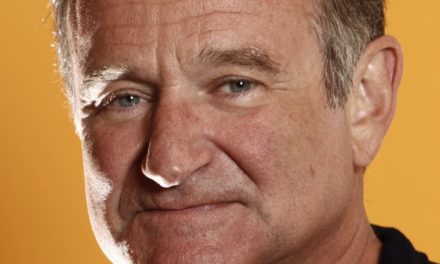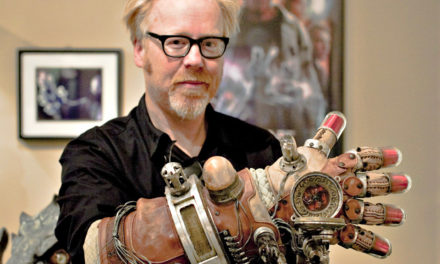End-of-year lists are ubiquitous and easy. But I’m a hack, and these are podcasts, not Us Weekly’s “Top Ten Celebrity Meltdowns.” There’s gravitas here.
Stitcher alone lists more than 20,000 podcasts in its catalog. With each of these shows pumping out an average of two, hour-long episodes per week, you’re looking at some real volume. It’s kind of awe-inspiring. The podcast renaissance is peaking, and I have to revel in it a bit.
Some of the following are podcast platinum, plain and simple—just perfect content, soup to nuts. Others left an indelible impression on me, and require more subjectivity to appreciate. But all are noteworthy, and the list paints a flattering, but honest, picture of the year in podcasting.
Freakonomics – Should Tipping be Banned?
Should Tipping Be Banned? was a purebred, perfect in its design and execution. The episode focused on Cornell professor Mike Lynn, an expert on tipping and the social indications surrounding it. Every variable in your average tip was explored: religion and tipping, attractiveness of the server, waiters vs. waitresses, the too-common “squat next to the table” move, and even hair color. And, yes, blondes get better tips. They covered it all.
As is the Freakonomics way, the idiosyncratic bits and pieces reveal much more about the human condition than one would expect, and the episode is wrapped up in well-produced if not open-ended bow. Truly a perfect example of great research in radio and storytelling.
WTF with Marc Maron – Iggy Pop
Iggy Pop arrived at the cat ranch in his limo, chewed the fat with Maron for a few minutes, made his way to the garage, took off his shirt, and the rest is podcast history. Truth be told, I could’ve picked any one of a dozen WTF episodes for this list. But this one stood out.
Maron was giddy, clearly full of questions he’d had for decades. But he managed to extract from the sometimes nebulous Mr. Osterberg an hour of rich stories about life as a proto punk, his role in pop culture, and the world that produces a celebrated iconoclast. Turns out it wasn’t so unusual. Mom was a homemaker, dad was an English teacher. What this episode really did was embody what Maron does best: find the story, even when he’s about to fanboy all over himself.
The State We’re In – Episode 1 – Stuart Sharp
I’m ashamed to admit The State We’re In came out of left field. It’s the kind of program I gravitate toward: compelling, unique stories told in intimate one-on-one vignettes. Well, the story I heard wasn’t short enough to be a vignette, but 28 minutes isn’t exactly War and Peace either.
I’ll cite episode one, simply because it was my introduction to Jonathan Groubert and his charming radio show turned podcast. In it, Stuart Sharp tells the story of how he composed a symphony following the death of his son—despite his inexperience with the craft. He says he was guided by angels or “snow people” in his endeavor. This episode landed a “driveway moment” if I’ve ever heard one.
Go Bayside – Episode 38 with Paul F Tompkins
Go Bayside! is comedian April Richardson’s weekly critique of Saved by the Bell. She sits down with another comic and dissects the misadventures of Zack and the gang episode by episode. The concept is so unique and ostensibly narrow in its focus it had to make the list.
Richardson’s perfect guest proved to be Paul F. Tompkins. His palpable shock at the absence of quality this ’90s dram-com offered adolescent America every Saturday morning was beyond funny. Every other observation they make is chuckle worthy. The motive behind Go Bayside! is innocent snark, but the product is profoundly punk rock.
Nerdist – Episode 368 with Rick Moranis
Sure, the Tom Hanks episode represented a shift in Hollywood’s perception of podcasts, but the one that really raised the bar in my opinion was number 368 with Rick Moranis, an actor who turned his back on show business decades ago. He revealed in this soulful interview that he is not the characters he made famous. He’s articulate, kind, and understandably disillusioned with certain aspects of his life.
There was one part that genuinely resonated with me: There were technical issues in the studio they were using, so the intro and the outro were done on a handheld device without a directional mic. You hear the audio quality transition. The formal interview ends, and Chris drops his burrito line, then the low-fi mic takes over. Moranis, seemingly unaware he is still being recorded, thanks Hardwick with more sincerity than I’m sure the host is used to. It catches the listener off-guard, happily off-guard.
99% Invisible – I ♥ NY, TM
According to 99% Invisible, the story is well known: It’s the mid ’70s. A man sitting in the backseat of a cab, sketches the letter “I”, then a heart, an “N,” and of course a “Y.” He immediately realizes this is no ordinary doodle. Well, it was new to me.
Roman Mars’s increasingly popular podcast, 99% Invisible, sounds too NPR to be true. He describes it as “a tiny radio show about design, architecture & the 99% invisible activity that shapes our world.” And that pretty much nails every episode he churns out.
The one in question profiled designer Milton Glaser, and the little logo/tagline that brought him notoriety. You hear about the litigiousness surrounding his creation and ultimately examine why I ♥ NY holds the global community’s attention. Is it the city, or the universal malleability of this simple design? 99% is weird journalism, weird history, and the weird, sometimes mundane, stories behind the buildings, bridges, highways, and countless other overlooked “things” that surround us. Great podcast, great episode.
Radio Lab – Rodney Versus Death
There’s an exclusivity to episodes of Radio Lab you don’t find in the more prolific podcasts. They air few and far between, but when they do, they almost always leave an indelible impression. This one was most certainly memorable.
What do you do in the face of a monstrous disease with a 100% fatality rate? In Rodney Versus Death we learn about rabies, ugly, typically fatal rabies. Though short by podcast standards (30ish minutes), this one really packs a punch. Jad Abumrad and Robert Krulwich delve into the harsh reality of the virus, and invariably uncover interesting, little known facts: It seems the mania associated with being “rabid” exists for transmission purposes; and biting is a near-perfect delivery system. The afflicted also have a very difficult time swallowing, even a fear of water, making the host’s mouth a repository for the virus. So the whole slobbery biting thing is merely an evolutionary event that keeps the virus going.
I don’t want to spoil this one for you, as Radio Lab’s all about the twist. But there IS mention of “rooster’s anus cure.” I’ll leave you with that.
You Made it Weird – Episode #139: “Bert Kreischer”
Pete Holmes is one of those guys you wind up with at a party after everyone else has left, talking about your childhood, and all the people you’ve dated prior to the party in question. A Holmes interview, not dissimilar to the aforementioned conversation, can go from intimate, to inappropriate, to sweet, in a matter of seconds. This episode didn’t disappoint in that department.
Bert Kreischer, this episode’s guest, is a gifted comedian and podcaster in his own right. He is, after all, “the guy who National Lampoon’s Van Wilder was based on.” But what makes this episode stand out in the Holmes canon is the comedic sweet spot these two natural-born riffers find just seconds into the interview. They “ping and pong” with more ease and effortless levity than any other conversationally formatted show I’ve heard all year. And they do it for more than two hours. Truly exceptional pod.
How Was Your Week? episode 121, “Silver Dollar Pancakes”
This may fall under the honorable mention category, but it’s such a good example of free association in an intro I had to put it in. Julie Klausner has a gift when it comes to non-linear riffing. Take episode 121, “Silver Dollar Pancakes”; when the monologue, by design, goes off the rails. One has no choice but to surrender to her lightening-speed transitions and circuitous segues. It’s simultaneously silly and remarkable. Here’s an example from episode 121, “Silver Dollar Pancakes” with Gillian Jacobs and Louis Virtel:
“Oh, I finally saw Cher on The Voice. I watched the clip online. She looked amazing, and she sort of also looked like a cockatoo. She kind of looked like Talkatoo Cockatoo from Zoobilee Zoo …
Zoobilee Zoo was a show on television, and it was shot in a studio that had literally nothing else in it besides these five actors or so that were just dressed up like these hideous amalgams of like people and animals … The weasel would act weasely and the cockatoo would just sort of act like Joan Cusack and Ben Verene was just… perfect.”
This American Life – # 507 Confessions
I’d be doing podcasting a disservice if I didn’t mention the show that started it all. Though its listenability has waned over the years, This American Life proved it still has a trick or two up its sleeve. I’m referring to episode 507 “Confessions.”
In the intro, Father Thomas Santa describes a condition called scrupulosity — a psychological disorder wherein moral questions can bring on guilt so intense a sufferer’s life can grind to halt. Yes, they had me at scrupulosity.
The episode succeeded because TAL revisited the recipe that made it the public radio Goliath it is today: relateable diverse segments that encapsulate an all-too-human theme, however icky it may be. In the case of “Confessions” the question worth answering was: What should a person suspected of murder say?
We have more! Check out this year’s best comedy podcasts list and best paranormal podcast article.





